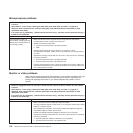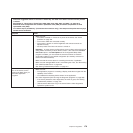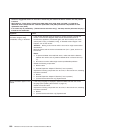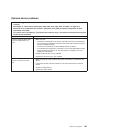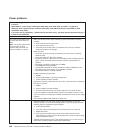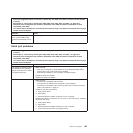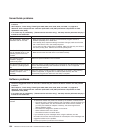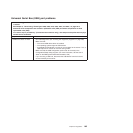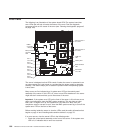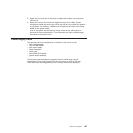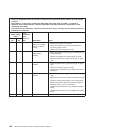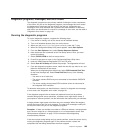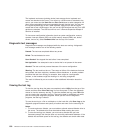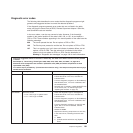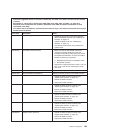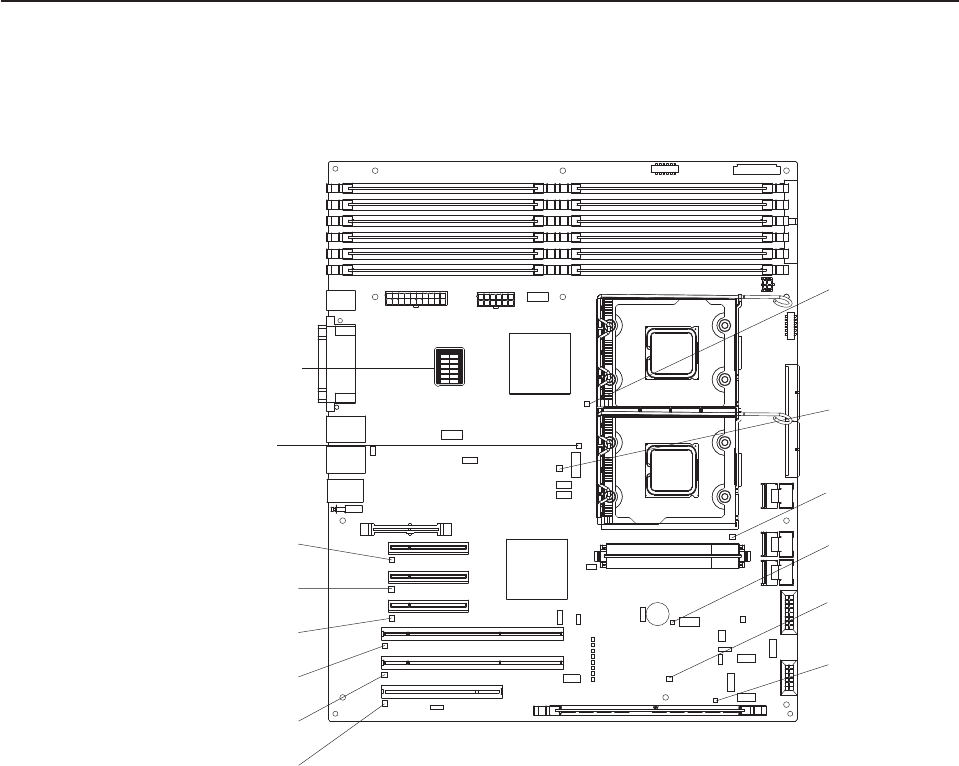
Error LEDs
The following is an illustration of the system board LEDs.The system board has
error LEDs that will help to locate the source of the error. Run the diagnostic
programs to find out the cause of the error (see “Running the diagnostic programs”
on page 189).
1
2
3
4
5
6
7
8
9
10
11
12
DIMM LEDs
Slot 1
error LED
Slot 2
error LED
Slot 3
error LED
Slot 4
error LED
Slot 5
error LED
Slot 6
error LED
Microprocessor
mismatch
LED
DIMM
error LEDs
1 through 12
Microprocessor 1
error LED
Microprocessor 2
error LED
VRM error
LED
BMC heartbeat
LED
ServeRAID
error LED
Battery LED
The server is designed so that LEDs remain lit when the server is connected to an
ac power source but is not turned on, provided that the power supply is operating
correctly. This feature helps you to isolate the problem when the operating system
is shut down.
Many errors are first indicated by a lit system-error LED on the control-panel
assembly of the server. If this LED is lit, one or more LEDs elsewhere in the server
might also be lit and can direct you to the source of the error.
Important: If the system-error LED on the front of the server is lit but there are no
other error indications, clear the BMC system event log. This log does not clear
itself, and if it begins to fill up, the system-error LED will be lit. Also, after you
complete a repair or correct an error, clear the BMC system event log to turn off the
system-error LED on the front of the server.
Before working inside the server to view the LEDs, read the safety information that
begins on page vii and “Handling static-sensitive devices” on page 75.
If an error occurs, view the server LEDs in the following order:
1. Check the control-panel assembly on the front of the server. If the system-error
LED is lit, it indicates that an error has occurred.
186 ThinkServer TD100 and TD100x: Hardware Maintenance Manual



